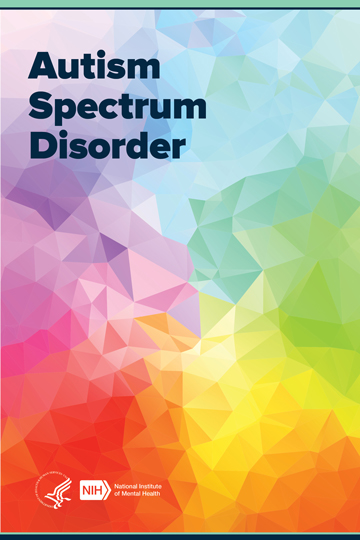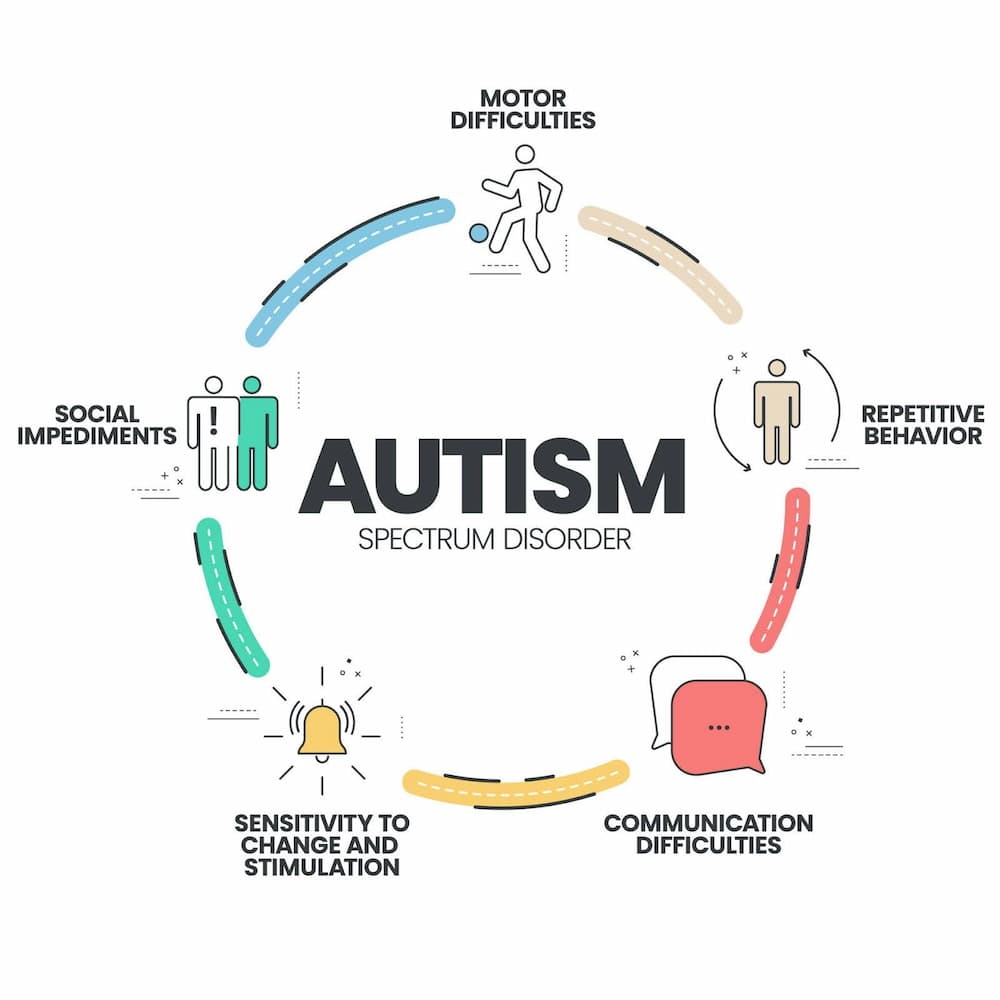Developing real connections with help from an Autism Therapist
Developing real connections with help from an Autism Therapist
Blog Article
Comprehending the Effect of Behavioral Autism on Daily Life and Social Interactions
You might not recognize exactly how deeply behavioral autism affects everyday life and social interactions. Individuals on the spectrum commonly browse a globe loaded with interaction difficulties and sensory overload. These obstacles can lead to stress and seclusion, affecting their partnerships and overall well-being. Comprehending these subtleties is necessary for fostering encouraging environments. What strategies can we implement to produce even more significant links and comprehensive rooms? The solutions may shock you.
Defining Behavioral Autism and Its Characteristics
Behavioral autism, frequently referred to as autism range disorder (ASD), includes a variety of conditions defined by obstacles in social interaction, communication, and repeated behaviors. You may discover that people with ASD often battle to translate social cues, which can result in misconceptions in conversations. They might find it difficult to establish eye get in touch with or participate in little talk, making social scenarios feel frustrating.
Communication troubles can manifest in numerous ways, from postponed speech growth to a choice for utilizing less words. Recurring habits, such as hand-flapping or shaking, can function as coping systems to take care of stress or sensory overload. These qualities can exceptionally influence daily life, making it necessary for you to understand and support those with ASD. By acknowledging these characteristics, you can cultivate an atmosphere that advertises approval and encourages effective communication, aiding people with autism flourish in their everyday communications.
The Range of Autism: Comprehending Variability in Actions
Autism range condition (ASD) isn't a one-size-fits-all diagnosis; it differs commonly amongst individuals. You may encounter individuals who are extremely verbal and engage easily in discussions, while others could favor singular tasks or connect non-verbally.
Moreover, the method individuals with ASD reply to sensory input can differ greatly; some could be bewildered by loud sounds or brilliant lights, whereas others thrive in stimulating settings. The range likewise includes differences in social interactions; some individuals might have a hard time to interpret social hints, while others browse social settings with relative ease. Understanding this variability is crucial, as it aids you appreciate everyone's unique experience and tailor support to their details demands, fostering a much more inclusive setting for every person.
Interaction Challenges Encountered by People With Autism
When you communicate with people on the autism spectrum, you may see their distinct interaction difficulties. They commonly face problems with both nonverbal and spoken hints, which can influence their social communications. Comprehending these obstacles is crucial for cultivating much better connections and support.

Verbal Communication Troubles
Lots of individuals on the autism range experience spoken communication problems that can significantly affect their day-to-day communications. You could discover it challenging to share your thoughts, sensations, or needs clearly. This can bring about aggravation for both you and those around you, as misconceptions occur. You might have problem with launching conversations, keeping a topic, or recognizing nuances in speech. Typically, you might prefer utilizing simple language or repeated expressions, which can restrict your capacity to participate in deeper conversations. Your tone, pace, or quantity may not line up with social expectations, causing others to misinterpret your intents. Identifying these obstacles can help you and your support network establish strategies to improve interaction and foster better connections with others in your life.
Nonverbal Communication Barriers
Verbal communication isn't the only obstacle individuals on the autism spectrum face; nonverbal interaction barriers can be equally as substantial. You could locate it hard to translate body language, faces, and eye contact, which are crucial for efficient communication. These challenges can bring about misconceptions or misconceptions of social hints, making interactions feel frustrating or complicated. You might battle to reveal your own feelings via nonverbal means, leaving others unsure of your feelings or intentions. This detach can produce sensations of isolation and irritation. Identifying these barriers is essential for cultivating understanding and compassion in your communications. By addressing nonverbal interaction, you can find strategies to enhance your social experiences and boost your overall lifestyle.
Social Communication Influences
Social interactions can frequently really feel overwhelming because of the unique communication challenges encountered by people with autism. You could battle with translating social signs, making it difficult to comprehend mockery or body language. This can result in misunderstandings or awkward moments in conversations. Furthermore, starting and keeping discussions might really feel difficult, triggering anxiousness in social scenarios. You might favor organized atmospheres, making spontaneous interactions unpleasant. It's also typical to experience trouble in participating in tiny talk, which can prevent forming brand-new relationships. Identifying these obstacles can aid you locate techniques to boost interaction, such as exercising social abilities in risk-free setups or using visual aids - Autism Behavioral Therapy. Comprehending your demands enables you to navigate social communications with greater confidence and convenience.
Social Communication and Connection Structure in Autism
While building relationships can be testing for people with autism, comprehending their distinct viewpoints you could try this out and interaction designs can promote significant links. You may see that numerous people on the range like straight interaction and may have problem with social signs or little talk. By being simple in your communications, you can help produce an environment where they feel comfy.
Involving in shared passions can also offer as a bridge to much deeper links. Whether it's a leisure activity, a preferred program, or a common interest, these common threads can open doors to friendship.
Day-to-day Live Regimen: Browsing Strategies and difficulties
Maneuvering life regimens can be specifically testing for people with autism, specifically when unexpected changes occur. You might find comfort in having a structured routine, as it aids you expect what's following. When disruptions happen, it's regular to really feel overloaded or anxious. To browse these obstacles, think about executing aesthetic routines or checklists. These tools can provide quality and confidence.
Developing a regimen that consists of sensory breaks can additionally be helpful. You can plan time-outs throughout your day to recharge. It's vital to connect with those around you, letting them know your choices and requirements. This helps create an understanding setting.
Last but not least, practice mindfulness strategies to manage tension and anxiousness. Basic breathing exercises or basing strategies can make a considerable distinction. By incorporating these approaches, you can improve your daily regimen and minimize disturbances, making life feel extra convenient.
Staminas and Capacities of People on the Autism Spectrum
Comprehending daily life regimens is simply one element of the autism experience. Lots of people on the autism spectrum have remarkable toughness and capabilities that establish them apart.
Furthermore, your memory skills commonly radiate, especially in areas of passion. Autism Spectrum Therapies. This flair for keeping details can make you a beneficial resource in fields like scientific research, art, or technology. You might also show solid aesthetic reasoning, enabling you to imagine complicated concepts and solve troubles creatively
In addition, your one-of-a-kind viewpoint on the globe can cultivate compassion and understanding in others, enhancing social communications. Welcoming these toughness not just boosts your confidence but also assists others value the diverse talents you offer the table.
Creating Inclusive Environments for People With Autism
Creating inclusive atmospheres for people with autism begins with developing sensory-friendly areas that provide to their unique requirements. You can likewise promote chances for social interaction, helping to construct connections and relationships. By making these modifications, you'll add to an extra inviting environment for everybody.
Designing Sensory-Friendly Spaces
While creating sensory-friendly areas, it's essential to reflect on the distinct needs of individuals with autism. Incorporate peaceful zones where individuals can retreat and charge when bewildered. Consist of aesthetic schedules or clear signage to assist people navigate the room with confidence.
Advertising Social Interaction Opportunities
Designing sensory-friendly rooms not only addresses individual comfort however also establishes the phase for significant social communications among people with autism. To promote these communications, create comprehensive atmospheres that invite involvement. Arrange structured activities, like art courses or team video games, that encourage collaboration without frustrating sensory input. Use aesthetic Go Here aids and clear communication to aid everybody engage comfortably. Urge peer mentoring, coupling individuals with autism with supportive peers that can lead them through social situations. Additionally, think about hosting routine neighborhood events that commemorate neurodiversity, cultivating acceptance and understanding among all individuals. By executing these techniques, you can improve social chances, aiding individuals with autism build friendships and strengthen their social skills in a risk-free, inviting environment.

Regularly Asked Inquiries
Exactly How Can Pals Assistance Someone With Behavioral Autism?
You can support a close friend with behavior autism by holding your horses, listening actively, and appreciating their limits. Participate in activities they enjoy, connect freely, and create a comfy environment where they feel valued and recognized.
What Resources Are Readily Available for Moms And Dads of Children With Autism?
You can discover different resources for moms and dads of kids with autism, including support groups, educational sites, and regional social work. Getting in touch with other parents can additionally supply important insights and shared experiences to assist browse obstacles.
Can Behavioral Autism Change Over Time?

Yes, behavior autism can transform gradually. You may discover changes in communication, social skills, and actions as your kid expands. Early treatment and support commonly play crucial functions in these developing changes.
How Do Sensory Level Of Sensitivities Influence Life?
Sensory level of sensitivities can make daily experiences frustrating. You might deal with loud noises or brilliant lights, bring about anxiety or evasion. Finding atmospheres that accommodate your requirements can greatly enhance your convenience and total everyday life.
What Prevail Misconceptions About Behavioral Autism?
You may assume behavioral autism just impacts communication abilities, however it's even more facility. Lots of think people do not have empathy or knowledge, which isn't true. Recognizing these mistaken beliefs assists foster approval and support for those on the range.
Behavioral autism, typically referred to as autism range problem (ASD), encompasses a variety of problems characterized by challenges in social interaction, interaction, and recurring behaviors.Social communications can usually feel overwhelming due to the unique interaction challenges encountered by individuals with autism.Creating sensory-friendly spaces not just addresses specific convenience yet also establishes the phase for visit this site right here purposeful social communications amongst individuals with autism. Motivate peer mentoring, combining people with autism with helpful peers who can assist them with social scenarios. By applying these approaches, you can improve social opportunities, helping individuals with autism build friendships and strengthen their social abilities in a risk-free, inviting setting.
Report this page